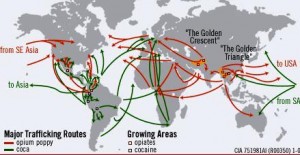
Although it is disguised as a suspenseful page-turner, Enrique’s Journey is also a serious book about the burning real-world issues of immigration from Latin America to the U.S. The contribution the book makes to the issue is to burrow deep inside one particular kind of immigration that has so far escaped notice. Hidden in the wider flow of close to a million illegal immigrants per year is the arrival of almost 50,000 children to the U.S., most following a mother who already left them behind. For as loud and as long that the arguments about immigration have been in the U.S., this type of immigration has not been acknowledged or understood.
The book is a compelling and powerful one to read for all the reasons that journeys have always made for good literature, from the book of Exodus to Hunter S. Thompson. There is also the tension between two powerful opposing forces: the genetic bond attracting children to their mothers versus the war on illegal immigrants waged by both the world’s most powerful government and by desperate and evil predators.
The author Sonia Nazario focused on one boy and his mother, which pumps up the suspense by launching one single narrative in motion and placing real flesh-and-blood people on this ride. This is not just a gimmick; Nazario announces her main intent was to “humanize” the issue. In other words, this book is deliberately neither scholarly nor analytical, yet it is nonetheless worthwhile given how unknown is the type of immigration peopled by the abandoned children of single-mother immigrants. The lengths to which the professional reporter went to experience this journey, and the access she gains to the damaged lives and dangerous underworld the journey traces, are other sources of the wonder the book rewards its readers.
The prologue of the book focuses more on the author Nazario and her own immigration history (all our families have them), and how she came to see that there was a story about the single-mother immigrants that had not been told. She also hints at what she concludes is the result or effect of this under-reported type of immigration. Although the book is not constructed overtly as an argument, Nazario betrays a point of view.
The first chapter tells of the mother’s journey and the life of children left behind, and does so through the story of one child named Enrique. This part of the book provides the best view of the impoverished lives in the home country, weaving the attendant problems of hopelessness, violence, corruption, and malfunctioning civil society. In other words, this is the story of what immigration scholars call the “push factors” in explaining the causes of any current of human flowing across borders.
The second and third chapter narrate the early parts of Enrique’s quest to reach the U.S. and his mother. This is set in another foreign land—Mexico. Problems of poverty, violence, and corruption are also vivid here. I assume most Americans, if they consider the suffering of immigrants to the U.S. at all, know only of the challenge of crossing the U.S. border and very little of the treatment of migrants deeper within Mexico itself. Some active opponents in the U.S. of illegal immigration portray Mexican authorities as tougher on their immigrants than is the U.S. Enrique’s Journey provides a ground-level view from within Mexico of this shameful treatment by officials and gang. However, the book also complicates the premise that all Mexicans are rougher than those in the U.S. on immigrants who are, as they say in Spanish, sin papeles.
The following are some questions I askk of students regarding the book from the prologure through chapters 3:
1. What does the author seem to conclude about the result or effect of the child immigration to the U.S. to re-unite with mothers? What is ultimately her take or point?
2. Although the lives of Enrique and Lourdes are separated for many years, what is similar about their lives and experiences? What do they share in common?
3. Chapter titles refer to beasts and mercy. Give two examples each of the merciful and the beastly behavior of Mexicans toward Central American migrants. Be specific.











